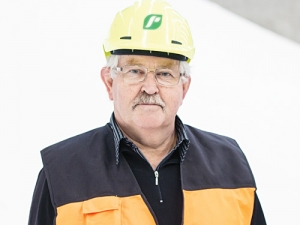These days the process of getting hold of potassium (K) in water-soluble and plant-available form is on a totally different scale.
Large mines in far-off countries like Belarus produce millions of tonnes to fuel global food production. Much of the potash, also known as potassium chloride, imported into New Zealand comes from one of the world's largest suppliers, Belaruskali. They bring in 70,000 tonnes of potassium chloride, also known as muriate of potash, to NZ each year and produce 12.8 million tonnes globally a year.
Why do plants need K in the first place? Potassium is involved in photosynthesis, boosting vegetative growth of plants, carbohydrate and nitrogen accumulation, facilitating the synthesis of proteins and sugars required for plant growth. Potassium also regulates the transfer of water and organic substances throughout the plant organs, which is needed to obtain high yields.
Just like humans, animals need this essential nutrient too. K regulates the functioning of nervous and cardiovascular systems, making a positive impact on muscle development, improving digestion and decreasing animal mortality.
The K way
Deficits of potassium can have alarming effects on animals, causing a loss of appetite, hyper-excitability, liver and kidney dysfunction and decreases of potassium levels in blood and milk. This is why optimal potash rates are advisable for highly-productive dairy cows.
Hidden deficits of K impede plant growth and development, and cause decline in yields and deterioration of quality. However, in the NZ pasture context, the K requirement for optimal plant growth far exceeds the requirement of K for the grazing animal.
Potassium deficits in pasture may not be immediately visible. Plants absorb K in much larger amounts than phosphorus, so annually soils may lose large amounts of K with application rates often not compensating for the losses caused by crop removal. The grazing animal recycles 70-90% of the K ingested in dung and urine usually back onto the pastures from whence it came.
Partial potash replacement is used particularly on sedimentary soils where K reserves can be large. This is because NZ's young sedimentary soils have not yet been heavily weathered. Even on these soils, where large amounts of K is removed and not fed back on the same area, such as in hay or silage crops, then (depending on current fertility) an appropriate strategy would be to apply some replacement K. This would be in addition to the normal maintenance fertiliser. For volcanic and pumice soils, which do not have the mineralogy associated with K reserves, a complete maintenance programme maintaining optimum soil test levels is appropriate.
To achieve high yields, optimum amounts of potash need to be applied at critical stages of growth and development. Many research papers indicate that K fertilisers can enhance crop yields and nitrogen use efficiency on average by 20%.
According to trials on sedimentary soils in North Canterbury, the application of 50kg K/ha on dairy pastures, where K reserves were considered high, resulted in the increase of dry matter during the milking season by 16%. This is because during periods of rapid pasture growth, soil K reserves may not always match plant requirements in terms of supply of K from weathering of clay minerals.
With larger areas being intensified for dairy farming, high-yielding arable and horticultural soils are undergoing an apparent increase in potassium (K) removal. However there are industry guidelines for optimum levels of K which are a good benchmark for making sure you're in range to achieve high yields.
If you want check your K levels, you can get in touch with your Ravensdown agri manager.
• Lloyd Glenny is Ravensdown product manager fertiliser.
















